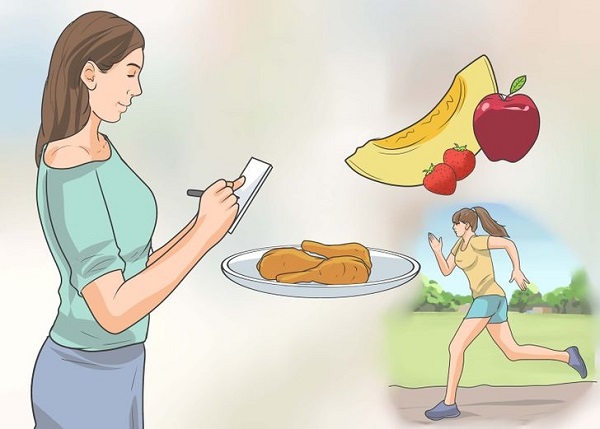By 8 months your baby is busy. They are busy playing, busy trying to move, trying to eat, and trying to talk. This is an exciting time for your little one. They are trying to start crawling, some babies at 8 months may already be crawling on their own, and some babies skip crawling altogether and may be trying to pull up and stand. Your baby is starting to get around. If you haven’t already this might be a good time to start baby proofing your home. Your little one can roll both directions and can get to things they used to not be able to. Also if they aren’t crawling just yet, it could happen quickly.
Babies at 8 months put everything into their mouths. Their mouth is a way for them to explore new things. This means tiny things can be choking hazards. If you have other kids, making sure they know how to keep the tiny pieces of their toys away from the little baby can also be a learning curve for everyone in the family.
At 8 months sleep starts to be easier. Your little one may be sleeping 11 hours at night. In some cases many 8 month olds are sleeping straight through the night with no night wakings or feeds. Depending on your child they will nap between 2-3 naps a day. Nap time total will add up to about 3-4 hours each day. This may mean you have 3, 1-2 hour naps a day. Or two longer naps depending on your child. All children have different sleep patterns so getting your child into a sleep routine can be beneficial to make sure they are getting enough sleep each day. Your baby will also be able to have longer awake windows. They should be able to make it comfortably about 2.25-3.5 hours between naps and night sleep.
Breast milk or formula should still be your child’s main source of nutrients. They should have about 4-5 feedings a day ranging between 24-32 ounces of milk or formula. Along with this your child should be on their road to solids. This can be done by experimenting with purees, or baby led weaning. Whichever way you prefer to go with your child. Food at this age is not about calories or nutritional value, it is more about learning new tastes and textures. If your baby makes a face after trying a new food for the first time, it does not mean they don’t like it. It may just mean they aren’t used to that taste or texture. Keep trying it, they may stop making a face.
Eight months is also the premiere time for teething to start. Teething begins usually with the bottom two center teeth, followed by the upper two centered teeth. Teething can range in timeframe for many babies, so if there are no teeth on the horizon for your little one do not get discouraged. A motor skill your baby will be developing in the 8th month is the pincer grasp. This is the ability of being able to grab something between their thumb and pointer finger. This is a great motor skill for your baby to learn because it can help them grap foods to eat on their own.
Your child may have been a social butterfly as an infant. Once they hit 8 months if you start to see your little social butterfly retreat back and become weary of strangers. Do not worry. This is totally normal. Your child will start to have fear of strangers and may become very shy and clingy to you around lots of people. Your child also starts to understand they are not a part of you and they are separate from you. This can cause them to start having separation anxiety from you. They may get sad or cry when you hand them off to someone else, even if it’s someone else in the family. Don’t get discouraged by this either. This means you are your baby’s safe person.
Your 8 month old baby may be starting to blabber a lot. They may have lots to say with noises and sounds. Familiar sounds like ba-ba, da-da, and ma-ma may start to come out in their chatter. Your child will also be able to respond to their name when you call it. Facial expressions may start to form on your little one. They will be able to have faces for when they are happy, sad, angry or surprised.
Big movement skills come around the 8th month mark. Your child should be able to easily roll both directions. They should be sitting up on their own. When you hold them in a standing position, bouncing or jumping their legs is normal. When your child gets into the hands and feet crawling position, if they aren’t crawling yet they may rock back and forth. Scooting, crawling backwards may come first before crawling forwards starts to happen around this time. Some babies will never crawl so don’t think your child is developmentally behind if they haven’t started crawling yet. Encourage your baby to have movement as much as possible. This helps them grow and strengthen their muscles. You can sit in front of your child so they can scoot or crawl to you for snuggles and kisses. You can also put a toy just out of reach while they are doing tummy time to help encourage your child to reach for the object or get moving for it. Your child may start to get to sturdy furniture and try to pull to standing. This is a skill they need to master before they can start walking.
Your child may thrive from you playing peek-a-boo with them. Hiding toys in front of them and seeing if they will find the toy is another fun game you can play. Reading to your baby is crucial for them to learn new words, look at pictures, and is a great way to develop a relationship with your baby. Singing songs is also wonderful.
Not all children hit milestones at the same time. Your child may hit some milestones but not others. That is ok. This is normal. All babies develop at their own rate. Milestones are guidelines for doctors to make sure your baby isn’t falling too far behind. Do not be concerned if your child doesn’t crawl. There are lots of babies who don’t crawl and will skip straight to pulling up and scooting around furniture standing. You know your baby best so if you notice something doesn’t seem right you can always check with your pediatrician. It is also best to speak with your pediatrician if you notice that your child is not making eye contact at all, does not respond to their name, is not waving or making other common hand gestures, does not look for objects that you hide in front of them ever, does not sit by themselves or try to crawl, or uses one side of their body more than the other.
READ MORE: Baby’s First Tooth – Teething
Sources:
https://www.mayoclinic.org/healthy-lifestyle/infant-and-toddler-health/in-depth/infant-development/art-20047086#:~:text=By%20this%20age%2C%20most%20babies,themselves%20to%20a%20standing%20position.
https://www.whattoexpect.com/first-year/month-by-month/month-8.aspx
https://choc.org/ages-stages/7-to-9-months/
https://huckleberrycare.com/blog/8-month-old-baby-milestones-development-growth-speech-language-and-more









